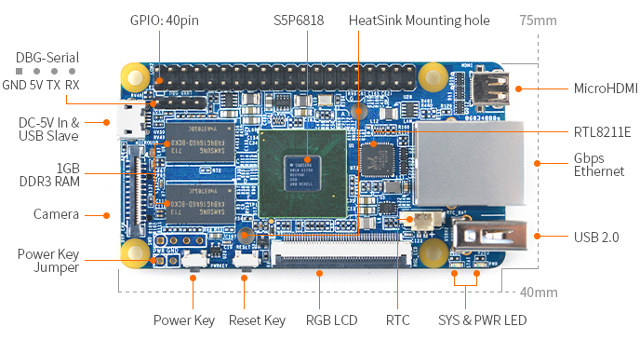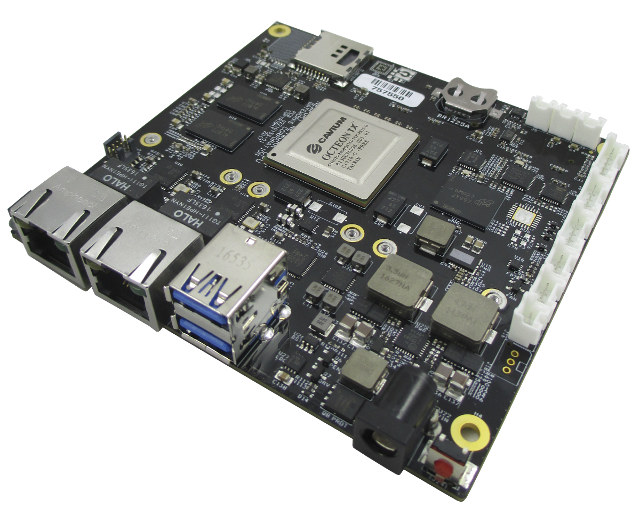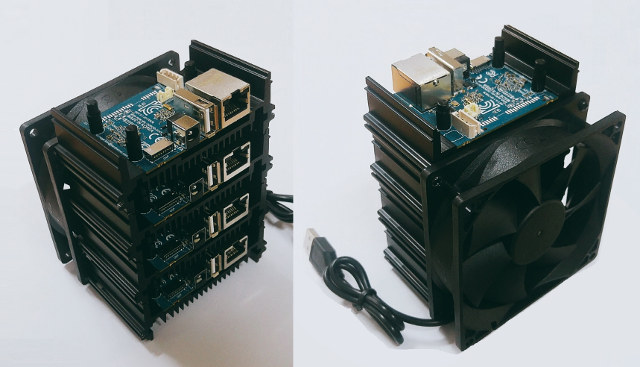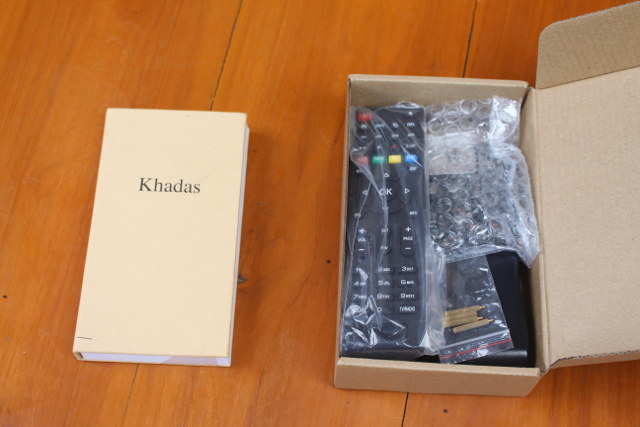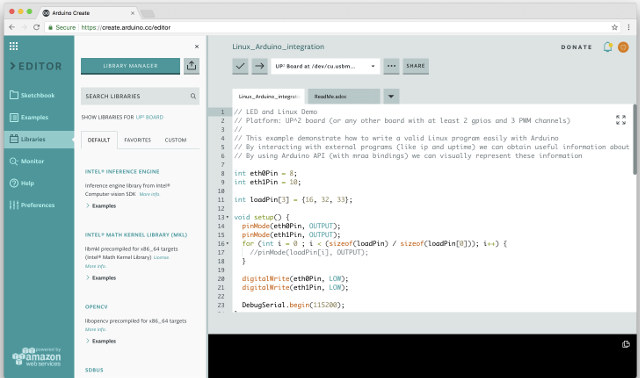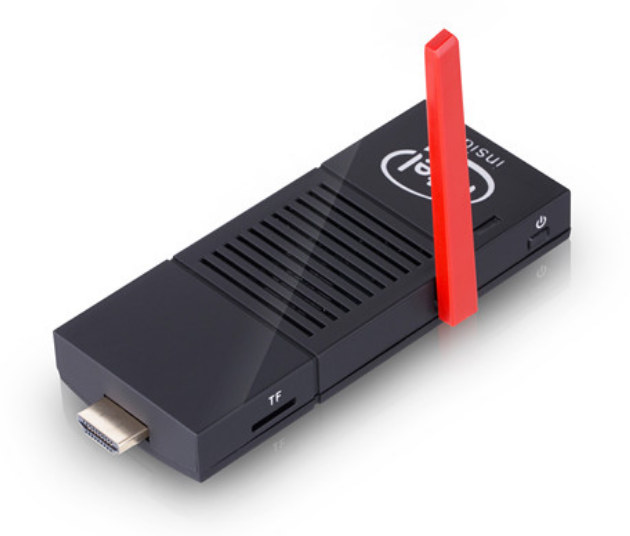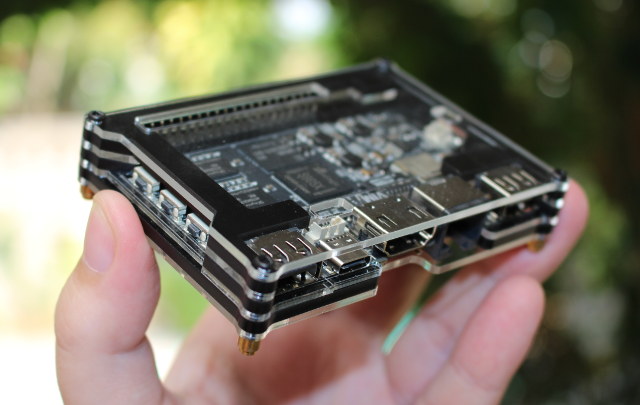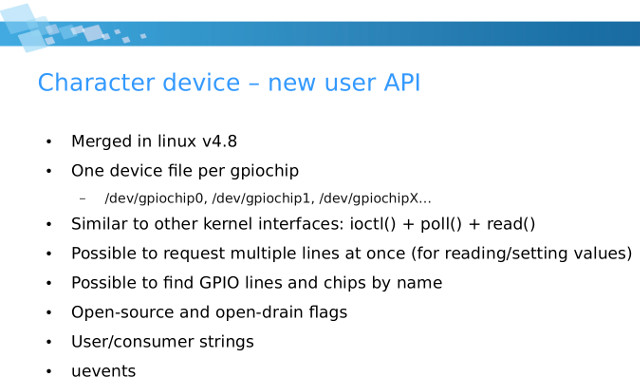FriendlyElec previously launched NanoPi 2 Fire board powered by Samsung (Nexell) S5P4418 quad core Cortex A9 SoC, mostly interesting because of its small form factor, camera and LCD interfaces. The company has now launched two new boards based on S5Pxx18 processors, namely NanoPi Fire2A powered by S5P4418 SoC, and NanoPi Fire3 based on S5P6818 octa-core Cortex-A53 SoC. Both boards share the same form factor, which remains quite similar to the one of NanoPi 2 Fire, except the HDMI connector now makes place for a micro HDMI port, the USB 2.0 has moved into vertical position, and a few other tweaks have been made to positions of buttons and components. NanoPi Fire2A / Fire3 specifications: SoC Fire2A – Samsung S5P4418 quad core Cortex A9 processor @ up to 1.4GHz, Mali-400MP GPU Fire3 – Samsung S5P6818 octa core Cortex A53 processor @ up to 1.4 GHz, Mali-400MP GPU System Memory Fire2A – 512MB DDR3 […]
Gateworks Newport SBCs Powered by Cavium Octeon TX 64-bit ARM SoC are Designed for Networking Applications
Gateworks is a US based company that provides embedded hardware solutions to mobile and wireless communications markets such as their NXP i.MX6 powered Ventana single board computers, including Ventana GW5530 SBC with compact form factor making it suitable for robotics projects and drones. The company has now launched a new family of single board computers with Newport boards based on Cavium Octeon TX dual and quad core processors, and targeting high performance network applications with up to 5 GbE copper Ethernet ports, 2 SFP ports for fiber. Eight boards from 4 board designs using the dual or quad core version of the processors will be launched in sequence until Q2 2018, but let’s first have a closer look at Newport GW6300/GW6304 boards’ specifications since they are available now: SoC GW6300 – Cavium Octeon TX CN8020 dual core custom ARMv8.1 SoC @ 800 MHz GW6304 – Cavium Octeon TX CN8030 quad […]
ODROID-MC1 Quad Board Cluster Launched for $220
Hardkernel teased us with ODROID HC1 Home Cloud server, and ODROID MC1 cluster last August with both solutions based on a cost down version of ODROID-XU4 board powered by Samsung Exynos 5422 octa-core Cortex-A15/A7 processor. ODROID-HC1 Home Cloud server was launched shortly after in September for $49. It took a little longer than expected for the cluster to launch, but ODROID-MC1 (My Cluster One) is finally here with four ODROID-XU4S boards, and a metal case with a cooling fan. The solution is sold for 264,000 Wons in South Korea, and $220 to the rest of the world. ODROID-MC1 cluster specifications: Four ODROID-XU4S boards with SoC – Samsung Exynos 5422 quad core ARM Cortex-A15 @ 2.0GHz quad core ARM Cortex-A7 @ 1.4GHz with Mali-T628 MP6 GPU supporting OpenGL ES 3.0 / 2.0 / 1.1 and OpenCL 1.1 Full profile System Memory – 2GB LPDDR3 RAM PoP Network Connectivity – 10/100/1000Mbps Ethernet […]
Khadas VIM2 Board Review – Part 1: Unboxing and Dual Tuner Board
Khadas VIM2 board is the successor of Khadas VIM board, replacing Amlogic S905X by a slightly more powerful Amlogic S912, but that’s the connectivity features that really makes it stand apart from the first version with Gigabit Ethernet, 802.11ac WiFi and Bluetooth 4.2. It also exposes a few extra I/Os via pogopins. and among the three variants, two comes with 3GB RAM, and up to 64 GB storage. The company (Shenzhen Wesion) sent me one of the boards, together with various accessories, and I’ll start the review of the board by checking out the hardware and accessories, before testing the board further in another post. I received two packages: one book-like with Khadas marked on top, and another one with various other items. The first package includes the board, a USB to USB type C cable, and a card showing the main specifications, and supported operating systems: Ubuntu 16.04, Android […]
Arduino Create Adds Support for Linux Development Boards (based on Intel processors for now)
Most people are used to program Arduino compatible boards with the Arduino IDE that they’ve installed in their Windows/Linux/Mac OS computer, and manage everything locally. But Arduino introduced Arduino Create last year, which includes Arduino Web Editor allowing you to perform the same tasks in your web browser, and save your files in the cloud. The company has now added Linux support to Arduino Create so that users can now program their Linux devices as if they were regular Arduino boards, and easily deploy IoT applications with integrated cloud services. The initial release has been sponsored by Intel, and currently supports X86/X86_64 boards, but other hardware architectures will be supported in the coming month. In the meantime, AAEON UP2 board is the best platform to get started, as a complete getting started guide is available for the platform. But other mini PCs such as Intel NUC, Dell Wyse, Gigabyte GB-BXT are […]
$100 CA98 TV Stick is Powered by Intel Celeron N3350 Processor
We’ve already seen Apollo Lake TV sticks such as MeegoPad T11, ECDREAM A9, or BBen MN10. Linuxium reviewed ECDREAM A9 model on this blog, and found out that Windows 10 (pre-installed), and Ubuntu 17.04 operating systems ran reasonably well with two main downsides: the relatively slow eMMC flash, and the noisy fan. Another issue is the size, as with 58mm width, it looks more an hybrid between a mini PC and a TV stick, than an actual TV stick. Another Apollo Lake TV/PC stick is now available with CA98 (aka CSA98) found on Aliexpress for $100, as well as on Shenzhen Indo Technology’s Alibaba page. CA98 specifications: SoC – Intel Celeron N3350 dual core processor @ 1.1 GHz / 2.4 GHz, 12 EU Intel HD graphics 500 @ 200 MHz / 650 MHz; 6W TDP System Memory – 2GB LPDDR3 Storage – 32GB eMMC flash (optional 16, 64 or 128GB) […]
Giveaway Week – Khadas Vim Pro Development Board
For the final day of this giveaway week, I’ll send Khadas Vim Pro development board to a new home. The board is powered by an Amlogic S905X processor coupled with 2GB RAM and 16GB storage, features 10/100M Ethernet and 802.11ac WiFi, and support 4K video playback and output via its HDMI 2.0a port. The board supports various operating systems such as Android, LibreELEC, dual boot Android/Ubuntu, etc.. and I wrote a Ubuntu review / getting started guide for the board in February. At the time, the image was still “raw” with many steps to perform by the users, and part of the documentation needing to be worked on. But the company (Szwesion) and members of the community are usually active in resolving user issues on the forums. I’ll give away the kit I’ve received with the board in an acrylic case, a USB to USB type C cable for power, […]
Learn More About Linux’s New GPIO User Space Subsystem & Libgpiod
Sysfs was used to control GPIOs on Linux system with the GPIOs defined in /sys/class/gpio, but starting with Linux 4.8, a new GPIO interface for user space was introduced, with gpiochip becoming char devices foudn in /dev/gpiochip0, dev/gpiochip1, etc.. , and sysfs allegedly become deprecated. But a quick check in NanoPi Duo with Linux 4.11 shows both GPIO user space interfaces appear to be enabled:
|
1 2 3 4 |
ls /sys/class/gpio/ export gpiochip0 gpiochip352 unexport ls /dev/gpiochip gpiochip0 gpiochip1 |
Nevertheless overtime, sysfs will die out, and the new subsystem will likely be used by all systems, so it might be useful to learn more about it. One way to do that is to watch Bartosz Golaszewski’s ELCE 2017 talk entitled “New GPIO Interface for User Space” with the video embedded below. But I first I’ll summarize some of the key points. Now GPIO handling from user space becomes similar to other char driver with ioctl, poll and read functions, and beside assigning numbers […]


